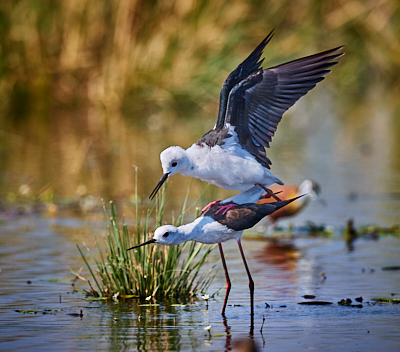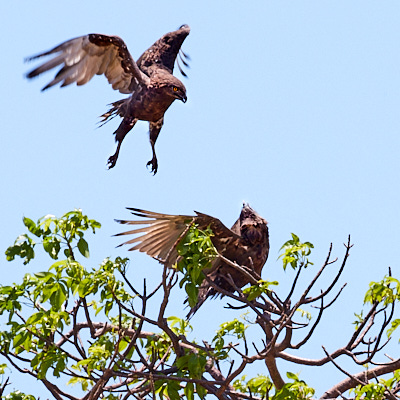BLOG
- HOME
- / Blog Main Page
- / Nature
THIS GOLIATH HERON BREEDING PAIR SURPRISED EVERYONE,,,
This is Part one of a series of blogs as I follow the progress of this breeding pair of Goliath Herons
The Goliath Heron is a highly territorial bird where one heron is reported to fiercely defend a territory of about six square kilometers or 600 hectares.
However, to our surprise this year, two breeding pairs of Goliath Herons (Goli's) decided to share the same territory at the Korsmans Bird Sanctuary (which is quite small at approximately 45 hectares) and surprised everyone. This is indeed quite special and we are all totally entrigued.
UNLIKE THE AFRICAN JACANA,GOLIATH HERONS TAKE JOINT RESPONSIBILTY
Unlike the African Jacana where the female lays her eggs and leaves all the responsibility to the male to incubate the eggs, protect them from predators and even raise the chicks once the eggs hatch, the Goliath Heron pair by contrast take joint responsibility from the time the eggs are laid right up to the time when the chicks finally leave the nest, a period that spans about ten weeks.

TAKING TURNS TO GO FISHING
The Goli's take turns in guarding and incubating the eggs whilst one of the pair goes fishing. After a few hours the pair swop roles and it's time for the other one of the pair to go off to do some fishing.
LOCATING A SUITABLE SPOT FOR THE NEST
This year, unlike on previous occasions, the Goli's decided to build their nest on the rocky island which is inhabited by a variety of other species of birds. The island is in full un-obstructed view of the public which makes it possible for members of the public to observe their behaviour.
The eggs will hatch in 30 days and once the chicks hatch, both parents will take turns in guarding the chicks and feeding them. During this time, the parents will take turns to leave the nest and go fishing, Following their catch, the parent then returns to the nest to feed the chicks through a process of regurgitation.
After about four weeks, the parents leave the chicks alone in the nest, returning at intervals to feed them.The chicks are ready to leave the nest at ten weeks.
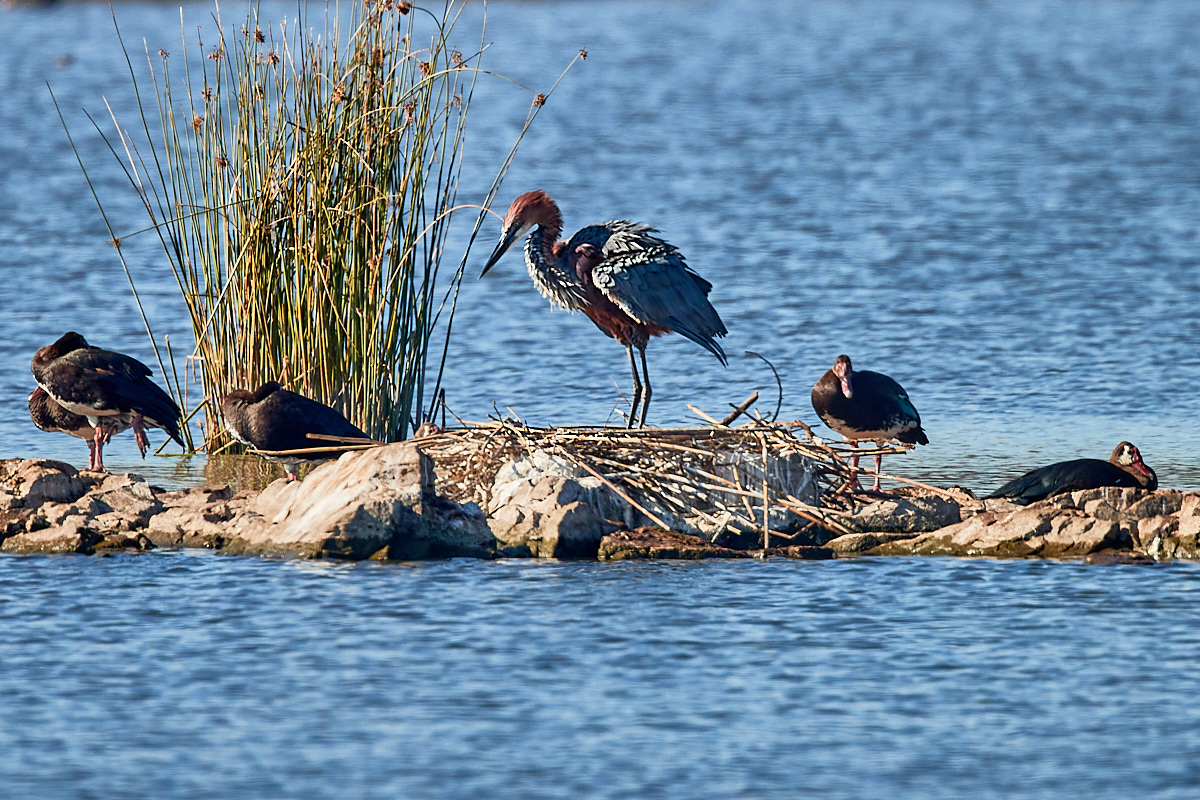
AERIAL ATTACKS
I spent three hours observing the behaviour of the Goliath Heron on its nest. At times the Goli seemed quite irritated at the constant arial attacks by the gulls and when an Egyptian Goose tried to peer into the nest, it got a glaring stare from the Goli with feathers raised up as if to say ' what are you looking at?'
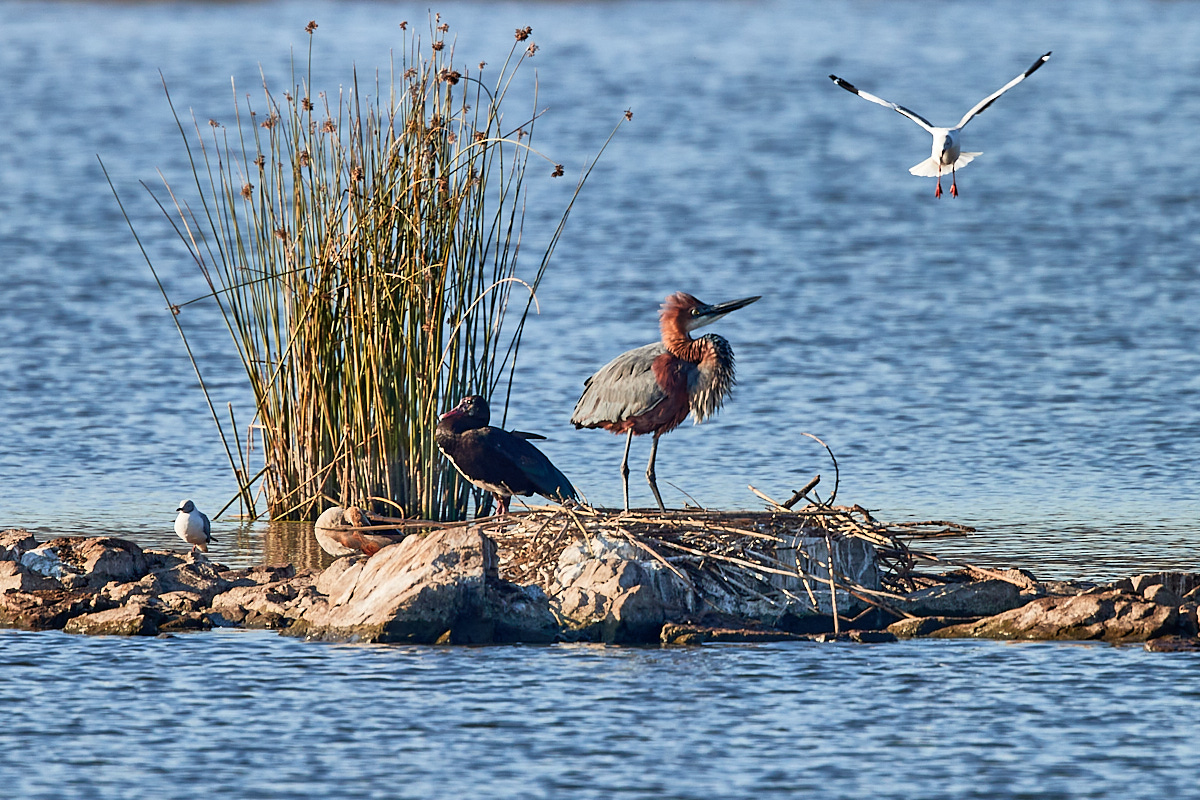
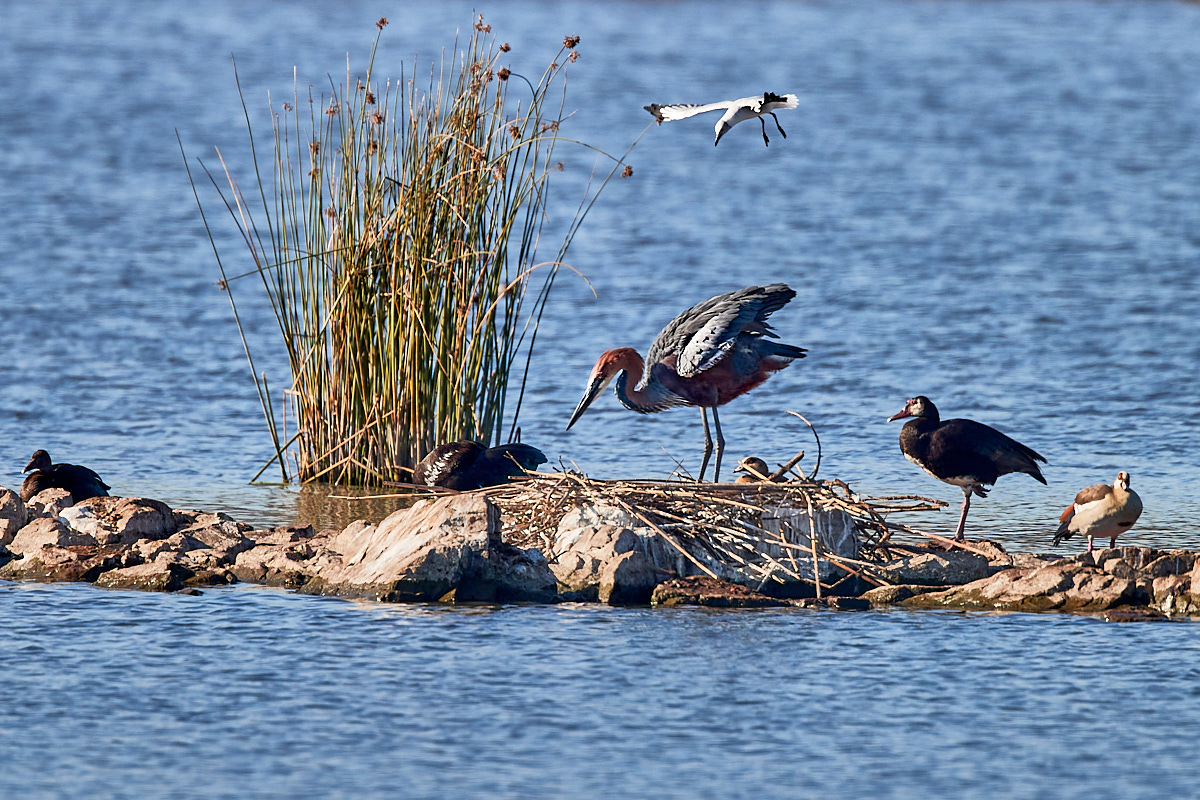
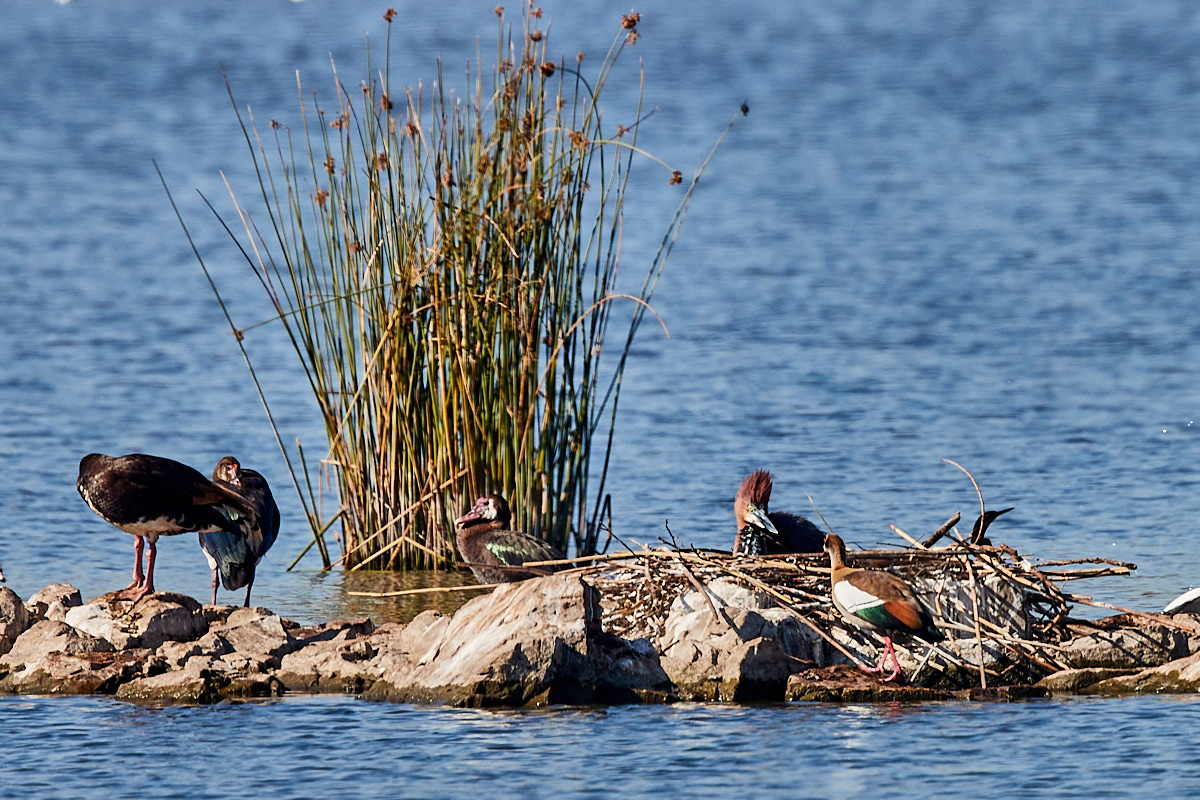
Periodically the Goli stands up and turns around and sometimes does some stretches (no doubt, it gets quite stiff sitting for so long on the nest) and occasionally the eggs are all turned before the Goli once again takes up its position and sits carefully on the eggs.
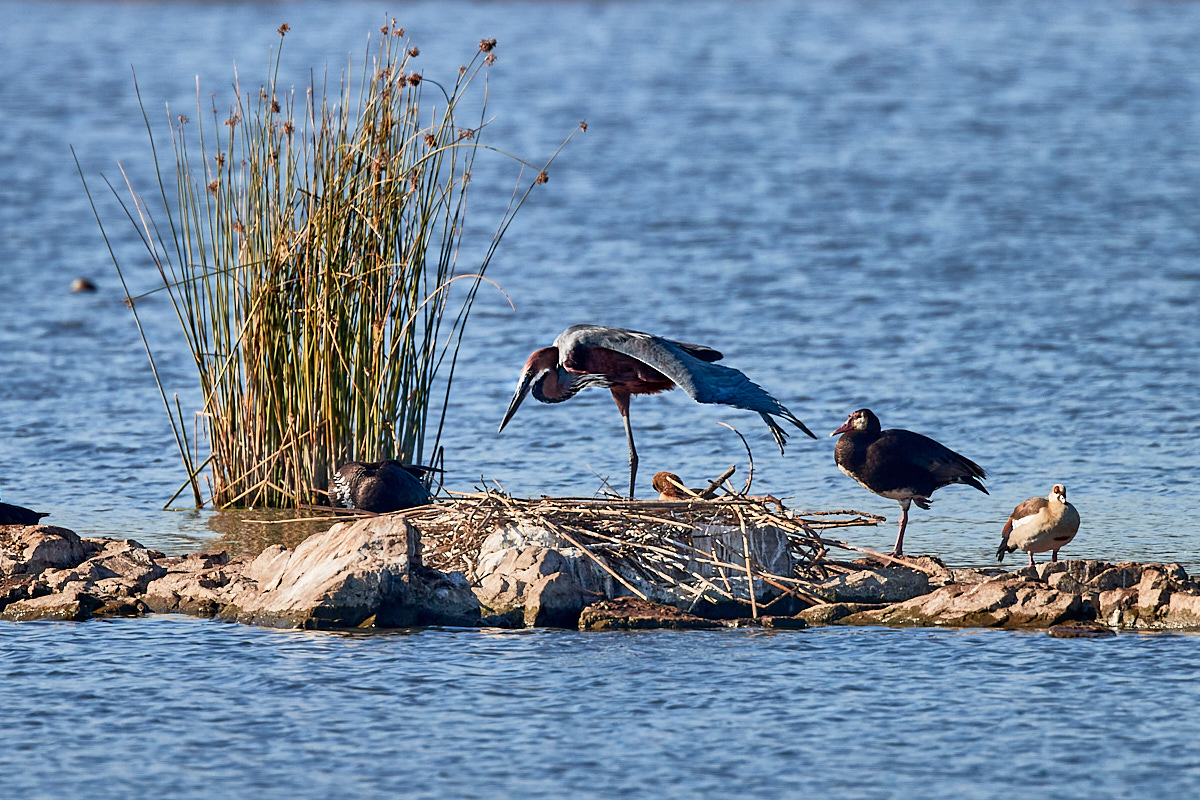
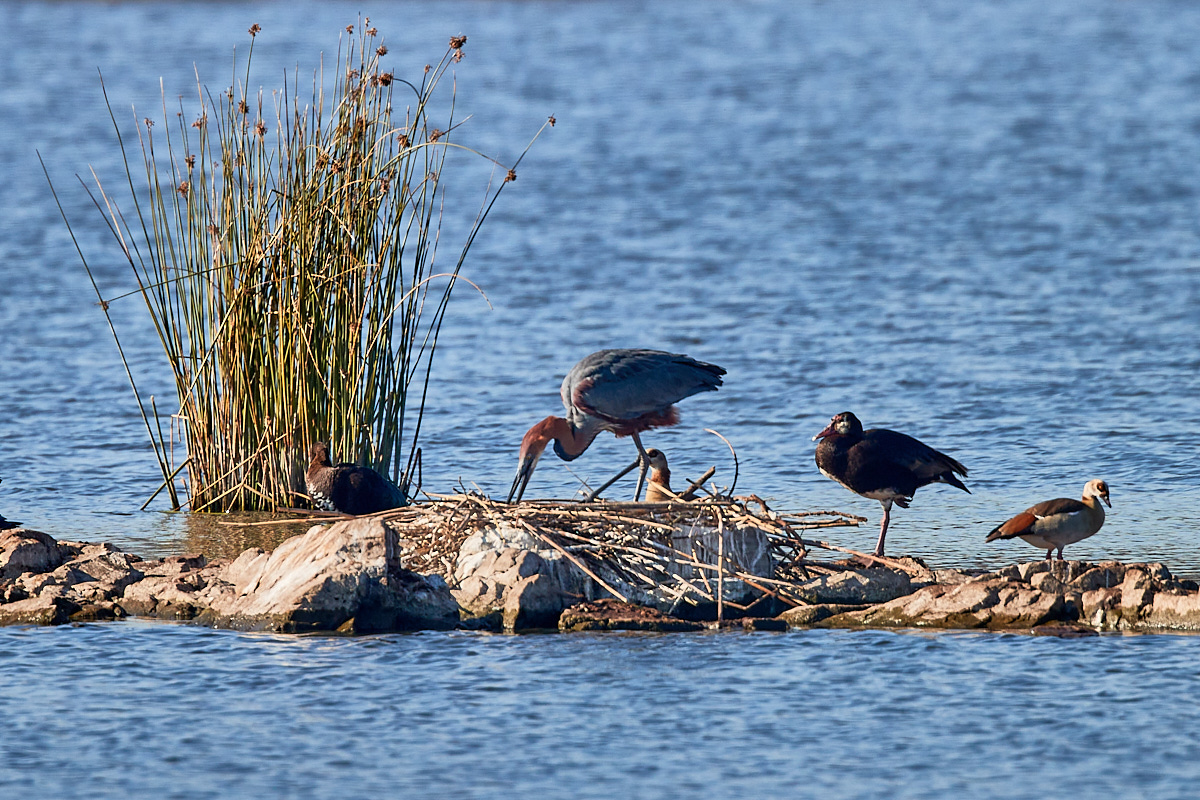
Looking from left to right, the Goli is very much aware of the activity all around with so many other island inhabitants and at times, the Goli gets particularly defensive when any of the other birds gets too close for comfort.
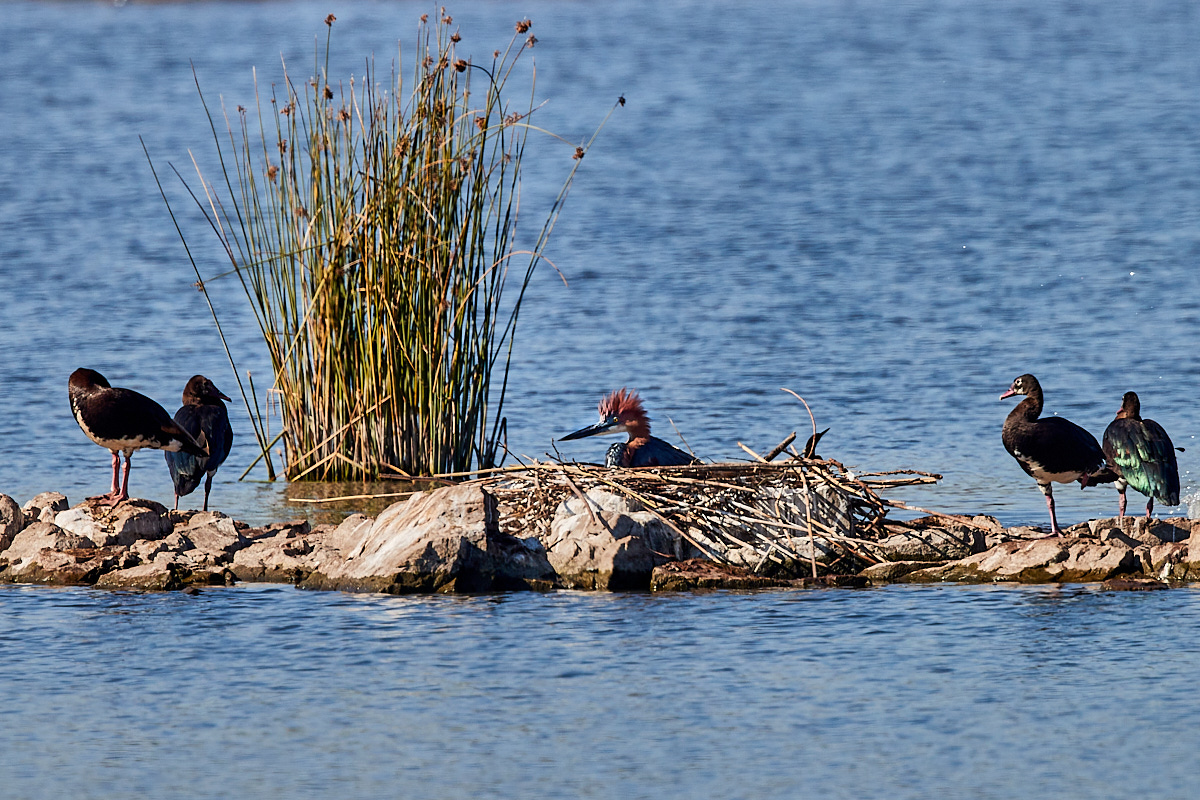
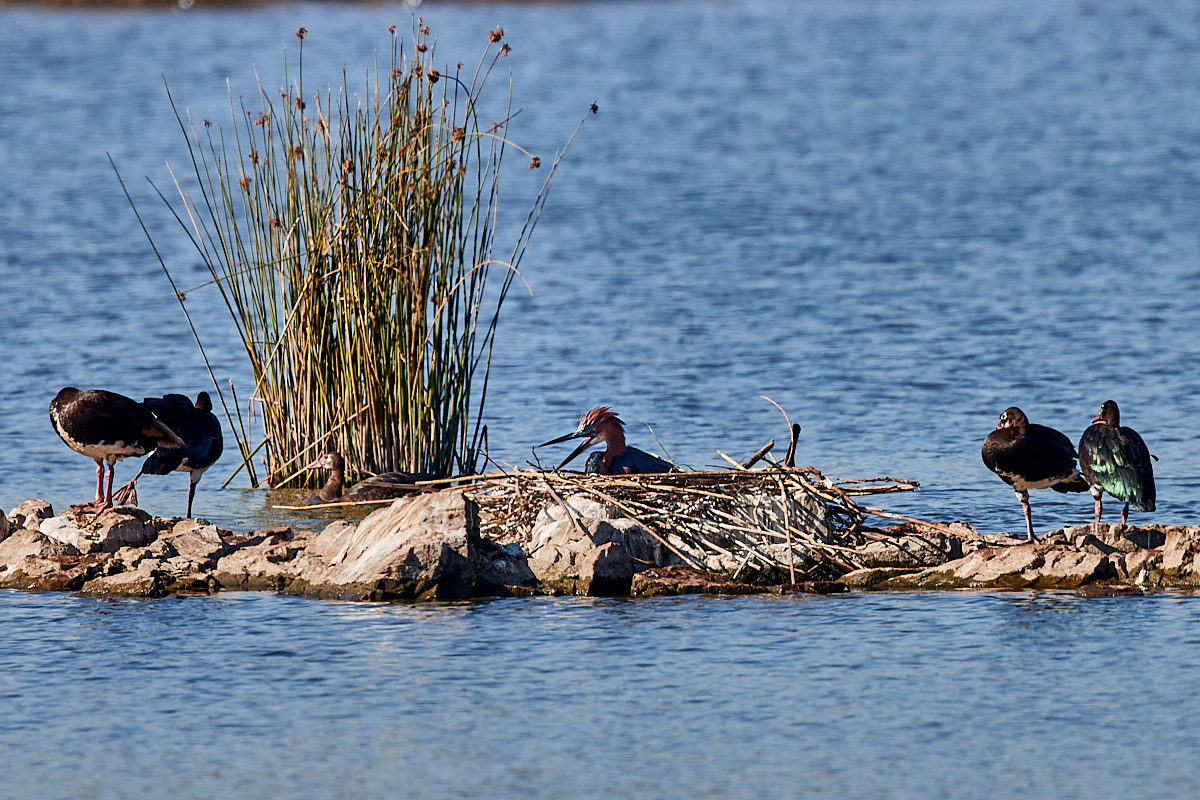
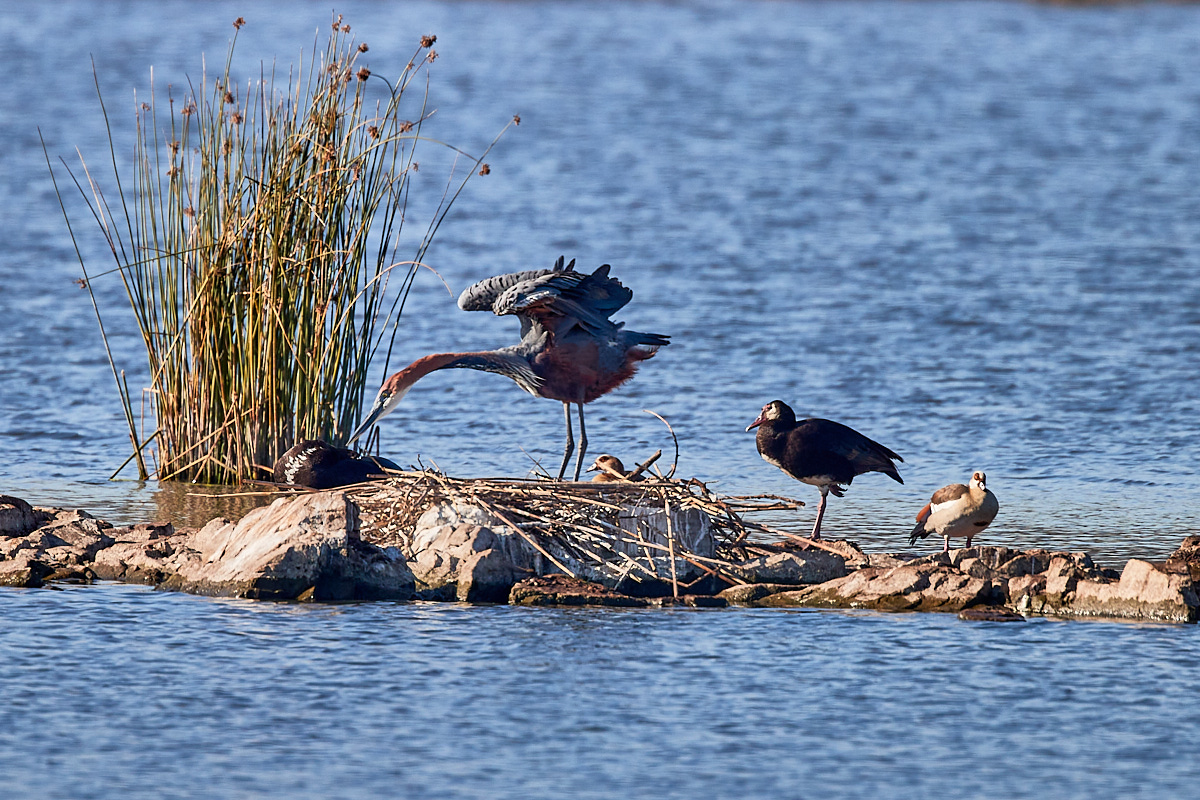
I will certainly be back to await the day that the chicks hatch and hopefully I will be able to capture some more images of this exciting event as it unfolds.
Source: The factual information in this blog was provided by Jane Trembath, Chairperson of the Korsmans Conservancy, from her observations of Goliath Heron breeding since 2016.

